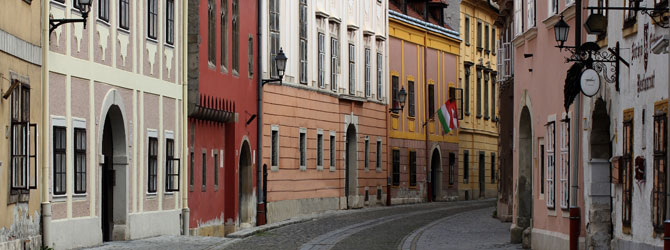Western Hungary and Austria
(Please note we are flexible for any changes according to your interest.)
The earliest traces of a Jewish community in Western Hungary can be found in Sopron and dates back to the 13th century. The Jewish merchants who settled down in Sopron probably came from Austria and Bavaria, like other settlers at that time. Sopron is known for its abundant wealth of historic buildings, nevertheless, the Old Synagogue (built around 1300) is one of the most interesting of them, a rare survival from medieval Jewish culture whose other material remains have almost entirely vanished.
In the Middle Ages, Eisentadt was probably the only town within the western Hungarian region now known as Burgenland (Austria) to have a fully developed Jewish community, with a synagogue, mikveh and rabbinate. It was the privilege of the big landowners and the smaller nobility to settle the Jews at that time. That is how the Seven Communities came about in the western part of Hungary, on the estate of the Esterhazy family. The Seven Communities were the first organizational unity of separate Jewish communities in Hungary. The communities of Eisenstadt (Kismarton), Mattersdorf (Nagymarton), Deutschkreutz (Sopronkeresztur), Frauenkirchen (Boldogasszony), Kittsee (Kopcseny), Lackenbach (Lakompak), and Kobersdorf (Kabold) belonged to the chief rabbinate of Eisenstadt, and they had their own inner administration; their privileges and culture made them prestigious and famous in Central and Eastern Europe.
The full-day tour includes the following programme:
Visit Sopron, one of the oldest and most charming cities in Hungary built on the ruins of a Roman town called Scarbantia. Explore the almost intact medieval inner city, including the former Jewish street (today called Uj utca-New Street) where a Jewish community lived until the beginning of the 16th century. Visit two unique synagogues built around 1300 that have been saved from complete oblivion.
Continue to Eisenstadt, the capital of Burgenland (Austria). Visit the Judengasse (Jewish Street) to see the Austrian Jewish Museum, in the house of Samson Wertheimer, the Chief Rabbi of Hungary in the late 17th and early 18th century. Visit Samson Wertheimer’s private synagogue, the most extraordinary attraction of the Jewish Museum. This beautiful synagogue is one of the very few ones in Austria that were not destroyed by Nazi vandalism. Continue to explore the wonderful Baroque palace of the Eszterhazy family who granted protection for the local Jewish Community for centuries. Back to Budapest, arrival in the evening.


